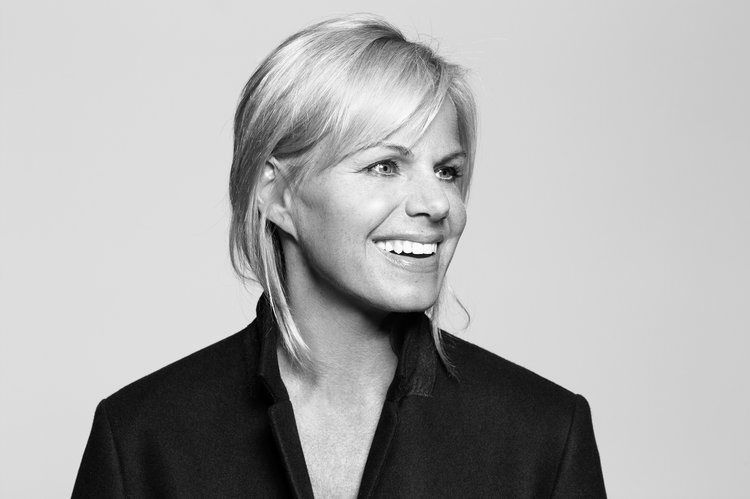
When I got my first job at a TV station in Richmond, Virginia in 1990, I remember being shocked by the amount of money being put on the table. And not because it was a lot! After graduating from Stanford and studying at Oxford University, the offer was less than $20,000 a year. But at least my first reporting job was a job, and a foot in the door of a new career.
As I progressed in the TV world, moving from Cincinnati to Cleveland to Dallas to CBS News in New York and onward, my salary increased with my experience. But was it the same as men in similar positions? It’s hard to know, even today, because unlike salaries for athletes published in the public domain, most of our salaries are secret, thus creating what I believe to be a big part of the pay equity problem.
Here’s the stark reality.
Today, Equal Pay Day, symbolizes how far into the year women have to work to earn what men earned in the previous year. Overall, women still earn approximately 80 cents for every dollar men make, and for African American and Hispanic women that figure is even less.
A report by the Economic Policy Institute broke it down even more, asking questions like these:
1) Can women close the wage gap by getting more education? Right now, no. Women are paid less than similarly educated men at every level of education, and the wage gap tends to increase with education level.
2) What about women who work in male-dominated occupations? Might they be paid more? Nope. Turns out these women are also paid less than similarly educated males.
3) Do women with children pay a “motherhood penalty”? Yes. After giving birth, women’s pay falls behind similarly educated and experienced men and women without children. And no, there’s no “fatherhood penalty.”
And of course, there’s the uphill battle women face against stereotypes in how we’re perceived when we “ask for more.” Men who assert themselves are seen as strong, self-assured and competent. Women are seen as the “B” word.
But let’s turn to the positive. Right now I am getting a sense that there’s a movement afoot — and that now is the time for change.
We’ve seen it unfolding in women’s sports over the last year. Members of the U.S. women’s soccer team filed a wage discrimination action against U.S. Soccer with the Equal Employment Opportunity Commission in 2016 demanding the same pay as their male counterparts; and the U.S. women’s hockey team threatened to boycott this year’s IIHF World Championships if they weren’t compensated fairly. Currently, the U.S. Women’s soccer team is negotiating the terms of a new deal, and the U.S. women’s hockey team resolved its pay dispute.
So what can each of us do?
First, let’s make a pledge that as women that we are all going to ask for what we’re worth and nothing less. There’s power in numbers when we all decide to speak up. Second, let’s be proactive on the local level and within our own workplaces.
Lauren Leader-Chivee, co-founder of All In Together, a non-partisan campaign working to help working women identify the tools of political power, offers these tips:
1) Think local. Research pay gaps in your states and find out what your representatives are doing. There’s a correlation between the weakest pay laws and the biggest gender pay gaps. Use the AIT Action Center resource to learn more.
2) Take action within your own company. After women at Salesforce went to their CEO to discuss pay disparity, an internal analysis ensued and resulted in increases in women’s salaries.
3) If you run a company, show your commitment by putting pen to paper and taking the Equal Pay Pledge. See how it works here.
Finally, I’ll leave you with two optimistic outlooks.
Sallie Krawcheck, the Chair of the Pax Ellevate Global Women’s Index Fund, which invests in the top-rated companies for advancing women, and who is also the Chair of Elevate Network, offers this on Equal Pay Day: “Sure, for now we may still have to fight for the promotions and the raises, but smart companies are beginning to figure out that we deserve the raise not because it’s the fair thing to do (though it is), but because we bring qualities to work that make our companies more innovative, our bottom lines stronger and our workplace better.”
Right now, prognosticators predict that if the earnings of women and men who are employed full-time, and year-round, change at the same rate as they did between 1960 and 2015 — the wage gap in the United States will not close until 2059.
That’s way too long for me.
More Must-Reads from TIME
- Donald Trump Is TIME's 2024 Person of the Year
- TIME’s Top 10 Photos of 2024
- Why Gen Z Is Drinking Less
- The Best Movies About Cooking
- Why Is Anxiety Worse at Night?
- A Head-to-Toe Guide to Treating Dry Skin
- Why Street Cats Are Taking Over Urban Neighborhoods
- Column: Jimmy Carter’s Global Legacy Was Moral Clarity
Contact us at letters@time.com